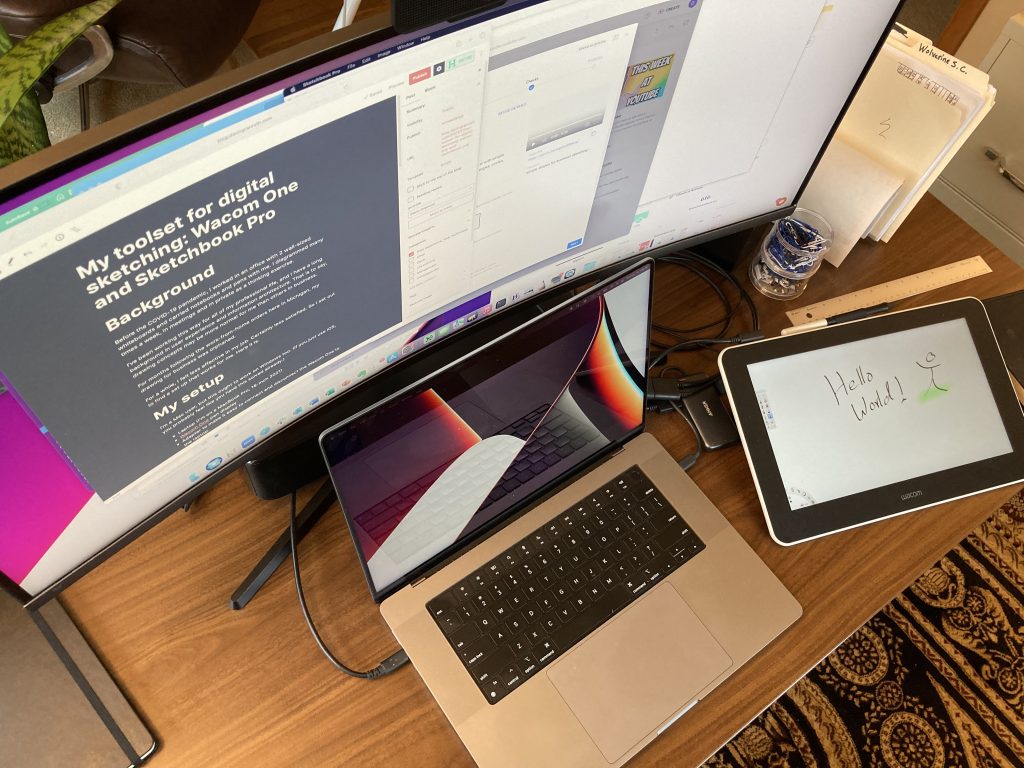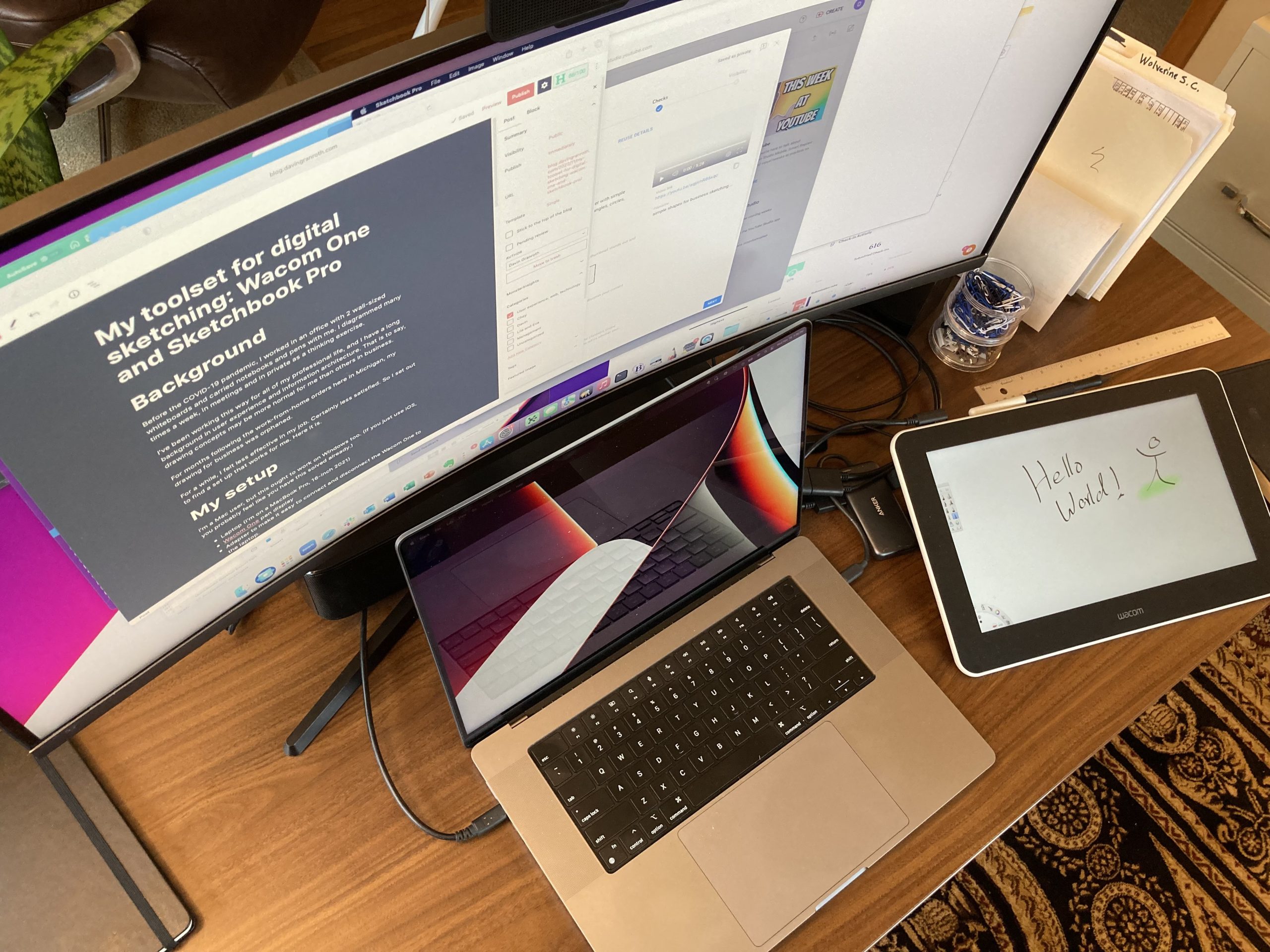Background
Before the COVID-19 pandemic, I worked in an office with 2 wall-sized whiteboards and carried notebooks and pens with me. I diagrammed many times a week, in meetings and in private as a thinking exercise.
I’ve been working this way for all of my professional life, and I have a long background in user experience and information architecture. That is to say, drawing concepts may be more normal for me than others in business.
For months following the work-from-home orders here in Michigan, my drawing for business was orphaned.
For a while, I felt less effective in my job. Certainly less satisfied. So I set out to find a set up that works for me. Here it is.
My setup
I’m a Mac user, but this ought to work on Windows too. (If you just use iOS, you probably feel like you have this solved already.)
- Laptop (I’m on a MacBook Pro, 16-inch 2021)
- Wacom One pen display
- Adapter to make it easy to connect and disconnect the Wacom One to the laptop.
- I’m using an Anker USB C hub. The USB C from the hub plugs into the laptop, and the HDMI and USB from the Wacom plug into the hub.
- Sketchbook Pro

Observations
Sketching tools have to be quick to hand—or you won’t use them.
The principle is that my toolset should enhance my visual thinking and communication abilities, not get in the way of them. That means they should be easy and immediate.
I’ve watched colleagues use their iPads for this same purpose. It works, just not as well in my estimation.
(If you are brand loyal to Apple, you will disagree with me, you just won’t be rational about it.)
I have a rule of thumb that I should be able to start sketching within a couple seconds of feeling the urge to do so.
And, I should be able to share my sketching tool instantly (not: oh, hold on, let me get this, oh dang, almost there, can you see this, no?, what about now? something isn’t working, let me reconnect to zoom, hold on…) on Zoom meetings.
The Wacom One doesn’t travel well, and I accept that trade-off.
When I drive into the office to work, because of the cables tethering it all together, I usually leave the Wacom One in my home office where I do most of my work.
And when I have brought it in, the set up hassle led me to leave it in the bag until I thought I would need it. But then I fell prey to the first principle above and didn’t use it at all, even when I had the urge.
So, when I get to the point where I’m working in the office again more routinely, I’ll probably need two Wacom One displays: one for the office and one for the home office.
Seems wasteful right? Yeah, that’s why I haven’t done it yet, but when frugality hurts creativity and productivity, it has gone too far. In truth, I’ve already put it off too long.
Sketchbook is not collaborative
On the extremely rare circumstances where I need to work simultaneously with other people on a board, I’m already not using Sketchbook.
Other tools that work for this that I have used include Zoom’s whiteboard feature and Miro.
99% of the time though, I’m sketching for my own sense making work or to explain and communicate something. For those, Sketchbook is ideal.
When I say “sketching” don’t think artistic
There is no art going on here.
When I sketch, I’m literally drawing stick figures, boxes, arrows, circles, and text. Sometimes some of those will be in color.
When explaining, I’m often talking about the ideas as I’m drawing them.
And I’ve erased most of these diagrams after I’ve drawn them. These are throw-away moments of communication; and if I need to communicate it again, I can draw it again. (Or the session was recorded.)
If you want a reference for thinking and communicating visually, I have two recommendations, in order.
- Back of the Napkin by Dan Roam
- Sketching User Experiences: The Workbook by Greenberg, et al. (Bill Buxton’s Sketching User Experiences book is great too, just less how-to.)

